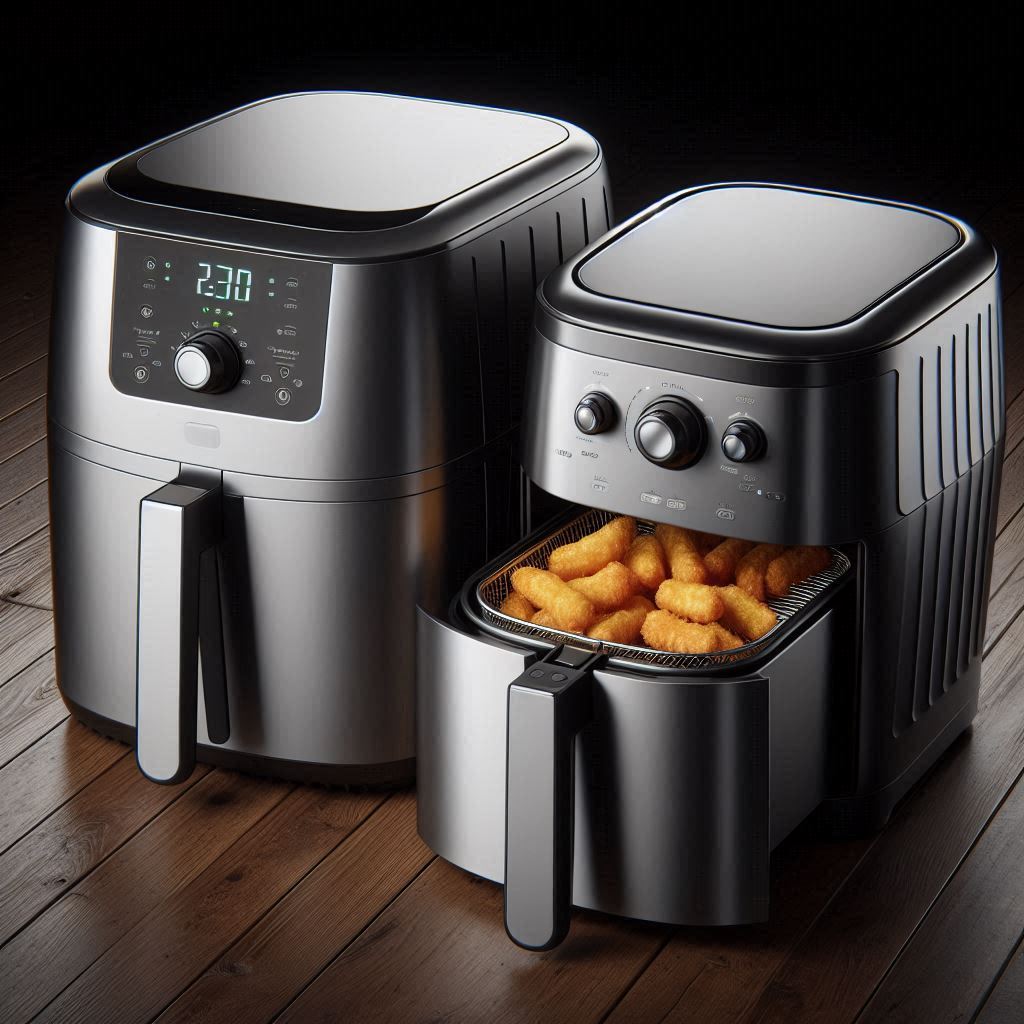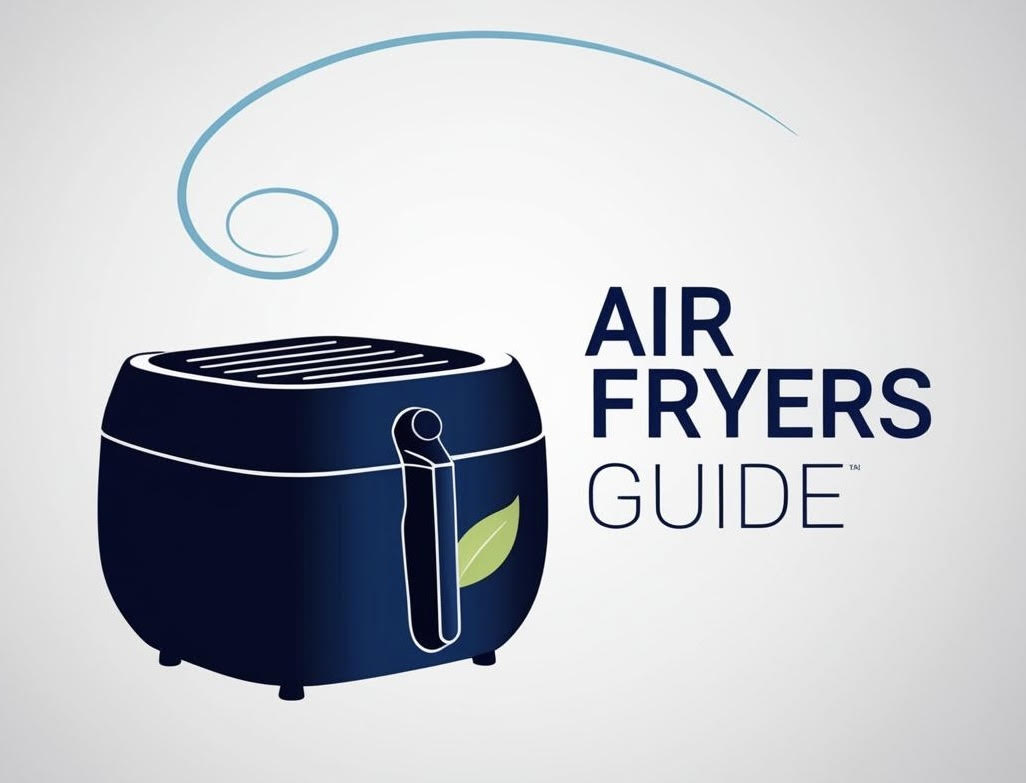Air Fryer vs. Deep Fryer: Healthier, Crispier, or Both?

The air fryer is often enthusiastically marketed as a healthier, less-messy alternative to the traditional deep fryer, promising similar crispy results with dramatically less oil. But how do these two popular appliances truly stack up when compared side-by-side? Let's break down the differences in their cooking methods, the results they produce, their health implications, and overall convenience to help you understand which is which and decide which is the right appliance (or perhaps if both have a place) for your kitchen.
How They Work: Air vs. Oil - Fundamentally Different
While both appliances aim to produce delicious, crispy food, their cooking methods are fundamentally different:
- Air Fryer: Cooks food by circulating super-heated air around it at extremely high speed using a powerful fan. Think of it as an intensified convection oven. A small amount of oil (often just a tablespoon or less, or even just a light spray) is often used directly on the food to help with crisping and flavor, but the primary cooking medium is this powerful stream of hot air.
- Deep Fryer: Cooks food by fully and completely submerging it in a bath of hot cooking oil (typically heated to a temperature between 350-375°F / 175-190°C). The hot oil transfers heat rapidly and efficiently to the food's surface, creating a quickly crispy exterior while simultaneously cooking the interior through.
This core difference in cooking medium (hot air vs. hot oil) is the root of all the distinctions between the two appliances.
Key Differences Explained
Beyond just the heating element, air fryers and deep fryers differ significantly in several key areas:
Amount of Oil Used & Absorbed
- Air Fryer: Uses a minuscule amount of oil compared to deep frying. Often just a tablespoon or less is needed to coat the food, or no added oil is used for foods that already contain significant fat (like chicken wings or bacon). Crucially, the food absorbs far less oil during the cooking process.
- Deep Fryer: Requires several cups (or even gallons) of oil to fully submerge the food being cooked. The food absorbs a significant amount of this hot oil during the rapid frying process, contributing to the texture and richness, but also the fat content.
Cooking Results & Texture
- Air Fryer: Creates a crispy exterior that is *similar* to deep frying, but often has a drier, more roasted, or oven-baked texture inside. It excels at achieving browning and crisping surfaces effectively using air. It's excellent for foods like crispy chicken wings, roasted vegetables, or air fryer french fries made with minimal oil.
- Deep Fryer: Delivers a distinctively crispy, sometimes slightly chewy, or tender-on-the-inside texture that many consider the "gold standard" for classic fried foods like traditional french fries, fried chicken, onion rings, or donuts. The oil cooks the exterior rapidly while essentially steaming the interior.
Health Implications
- Air Fryer: This is the most significant difference for many users. By using dramatically less oil, the air fryer significantly reduces the fat and calorie content of the final dish compared to deep frying. It's widely considered a much healthier cooking method for achieving fried-like results with a substantial reduction in unhealthy fats. Read a more detailed comparison in our guide: Are Air Fryers Healthy?
- Deep Fryer: Food absorbs a large amount of cooking oil, resulting in much higher fat and calorie counts. Frequent consumption of deep-fried foods is generally linked to various health concerns due to the high intake of unhealthy fats.
Cleanup
- Air Fryer: Generally much easier to clean. The basket and tray are typically non-stick and often dishwasher safe. There's no large vat of used cooking oil to handle, filter, or dispose of (see our cleaning guide).
- Deep Fryer: Requires careful handling and often difficult disposal of large quantities of hot, used cooking oil. Cleaning the fryer unit itself, especially if it has exposed heating elements or hard-to-reach areas, can be quite messy and time-consuming.
Safety
- Air Fryer: Safer to operate at home. There is no risk of large oil spills, splatters, or grease fires associated with heating large volumes of hot oil on a countertop. Exterior surfaces can still get hot during operation, but the inherent risk is much lower than with an open pot of hot oil.
- Deep Fryer: Involves significant safety risks due to the presence of large volumes of extremely hot oil. Accidental spills, tip-overs, or overheating can lead to serious burns or fires.
Cost of Operation
- Air Fryer: Requires minimal oil per use, making the cost of cooking oil negligible compared to a deep fryer. Uses electricity, often less than a full oven for small tasks.
- Deep Fryer: Requires frequent replenishment of large quantities of cooking oil, which can add up over time. Uses electricity to heat the oil.
Air Fryer vs. Deep Fryer: Quick Comparison Table
Here's a summary of the main differences:
| Feature | Air Fryer | Deep Fryer |
|---|---|---|
| Cooking Medium | Super-heated circulating air | Hot oil bath |
| Oil Used | Minimal (tablespoon or less) | Large volume (cups/gallons) |
| Oil Absorbed by Food | Very Low | High |
| Resulting Texture | Crispy exterior, drier/roasted interior | Crispy exterior, moist/steamed interior (classic fried) |
| Health | Significantly healthier (lower fat/calories) | Higher fat/calories, less healthy for regular consumption |
| Cleanup | Generally Easy | Messy, oil disposal required |
| Safety | Low risk (exterior heat) | Higher risk (hot oil spills/fires) |
| Cost of Oil | Low | High (over time) |
Can an Air Fryer Replicate Deep Frying?
An air fryer can produce results that are undoubtedly *crispy* and achieve a texture that is *similar* to deep frying for many common foods. However, it doesn't perfectly replicate the specific texture, mouthfeel, and sometimes the interior moisture or richness achieved by cooking food fully submerged in hot oil. The texture difference is often most noticeable in things like heavily battered items, classic donuts, or certain types of french fries.
For most common "fried" foods like chicken pieces (like breast or wings), french fries (especially frozen), snacks, and roasted vegetables, the air fryer gets remarkably close, often close enough that the health benefits and convenience outweigh the minor difference in texture for many people.
If your main goal is significantly healthier cooking with drastically less fat while still being able to enjoy crispy textures on many of your favorite foods without the mess and safety concerns of hot oil, the air fryer is an excellent and popular alternative.
Conclusion: Health vs. Tradition
Comparing air fryers and deep fryers reveals that while they both aim for crispiness, they do so through fundamentally different mechanisms with vastly different results in terms of health, cleanup, and safety. The deep fryer offers a traditional, high-fat method for a specific, classic texture. The air fryer offers a modern, significantly healthier alternative that achieves a similar (though not identical) crispy texture using minimal oil, with added benefits of safety and ease of use.
For most home cooks concerned with health and convenience, the air fryer is often the preferred choice for everyday "frying" needs. If achieving the absolute most authentic, oil-soaked fried texture is your sole priority regardless of health or cleanup, a deep fryer might be considered. But for achieving great crispiness with drastically fewer downsides, the air fryer is the clear winner.
